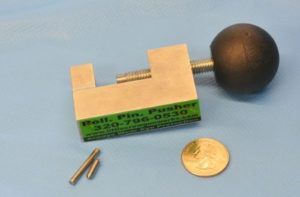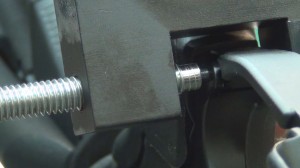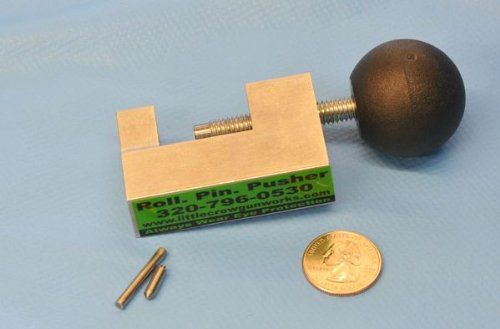Best AR-15 Roll Pin Pusher Review
Anyone who has ever built an AR-15 lower receiver can tell you that there is a higher probability for damaging the receiver when installing the trigger guard roll pin than any other component. The reason behind this is improper support of the “dog ears” or trigger guard tabs. It is crucial that these tabs be properly supported while forcibly pounding the trigger guard roll pin into place. If you don’t, you risk permanently breaking one (or both) of these tabs off.

I always prefer to get my marks and scars on my AR-15s from using them rather than building them—especially if I am building a lower receiver for a friend or family member and I didn’t pay for it. Permanently breaking a tab off on a lower receiver that I am building for someone else would not only prove an expensive mistake but also embarrassing and unprofessional.
I was relieved when I discovered the Roll Pin Pusher (RPP) from Little Crow Gunworks. Using the RPP has removed any anxiety I once had when installing the trigger guard roll pin and is actually faster than using roll pin punches.
How It Works
Instead of pounding, hammering, or punching the trigger guard roll pin, the Roll Pin Pusher almost effortlessly pushes the roll pin into place. I do not have to use any support for the dog ears since the RPP uses a small guide rod to keep everything lined up properly.
Here is a basic rundown of how to use it to install an ar15 trigger guard roll pin.

1. Place the trigger guard between the dog ear tabs on the lower receiver.
2. With the base over the trigger guard, place the RPP guide rod through the hole in the rear of the RPP, through the dog ear tab and then through the trigger guard. This will hold everything in place, including the RPP.
3. Unscrew/loosen the handle and place the trigger guard roll pin into the recessed end of the RPP.
4. Slowly tighten the RPP until the trigger guard roll pin has starts to move into the first dog ear tab. Stop turning before the RPP touches the receiver.
5. Unscrew the RPP and then place the roll pin pusher tip (the one with the nipple end) into the recessed end of the RPP.
6. Turn the RPP clockwise and as it is tightened, the roll pin will be pushed into place and the guide rod will be pushed out and through the hole in the rear of the RPP. Keep turning until the roll pin is pushed flush with the receiver.
7. Once the trigger guard roll pin is in place, remove the guide rod and RPP from the lower receiver and verify correct installation of the roll pin and trigger guard.
Personal Experience
Based on my own personal experience with using the Roll Pin Pusher, here is what I like about the tool and also some advice for those who may want to use it:
- Using the RPP properly makes it almost impossible to damage your lower receiver. However, there is always room for human error. You will still have to pay attention to make sure you do not over tighten the RPP, or you will risk scratching your lower receiver. With that being said, I feel that an error possibly leading to a scratch is still better than an error leading to a broken lower receiver. Using the RPP properly removes the possibility of permanently breaking the trigger guard tabs off.
- The guide rod and roll pin punch tip included with the Roll Pin Pusher are loose and can be lost. Using a piece of tape to secure said pieces to the RPP after using them works fine for me.
- Using the RPP to remove the trigger guard roll pin is possible and I have done it several times. Make sure to stop tightening the RPP if any resistance is felt as this is an indicator that something is not lined up properly.
- Based on my personal experience, the RPP is definitely faster than using a hammer and roll pin punch. In fact, my first trigger guard roll pin installation took me about 30 minutes because of how cautious I was being to not break any tabs off. I could see how saving time would be important to those that build multiple lower receivers a day (i.e. manufacturers or gunsmiths), as well as for your average “do-it-yourselfer.”
- The RPP will not assist with fixing a lower receiver that is already broken. It only helps to prevent breaking one in the first place. However, if you or someone you know has unfortunately broken the tabs off on an AR-15 lower receiver, installing one of these grips can be more cost effective than buying a new receiver.
Price and Ordering Information
The Roll Pin Pusher has a retail price of $39.95 (+s&h) and can be purchased directly from Little Crow Gunworks via their website or by calling the shop and speaking directly with the inventor, Dale Hegstrom. RPPs can be purchased at such outlets as Brownells.
If you ask me, spending roughly $40.00 is cheap insurance against a broken lower receiver—and it certainly beats paying over $100 for an entire new one.


